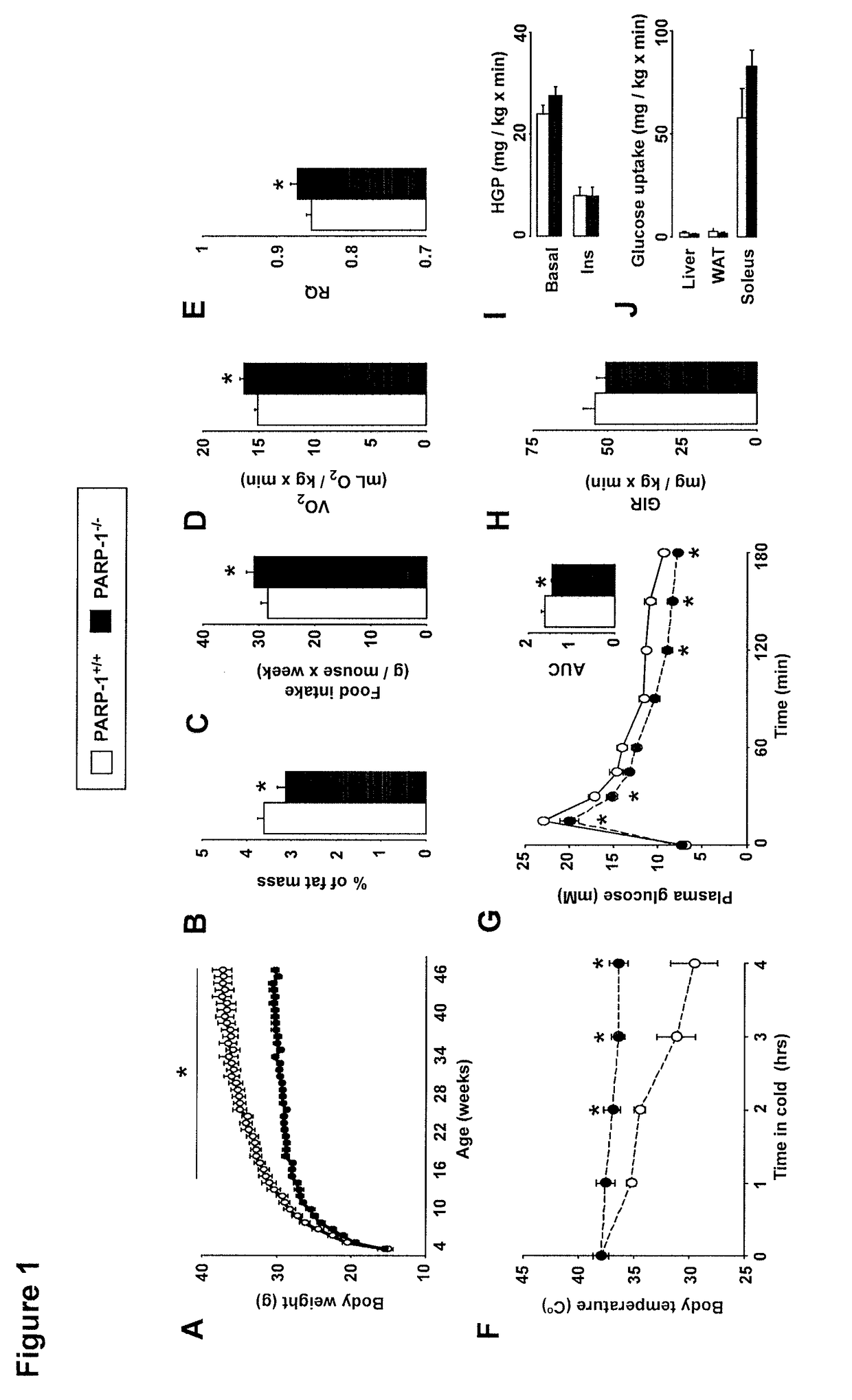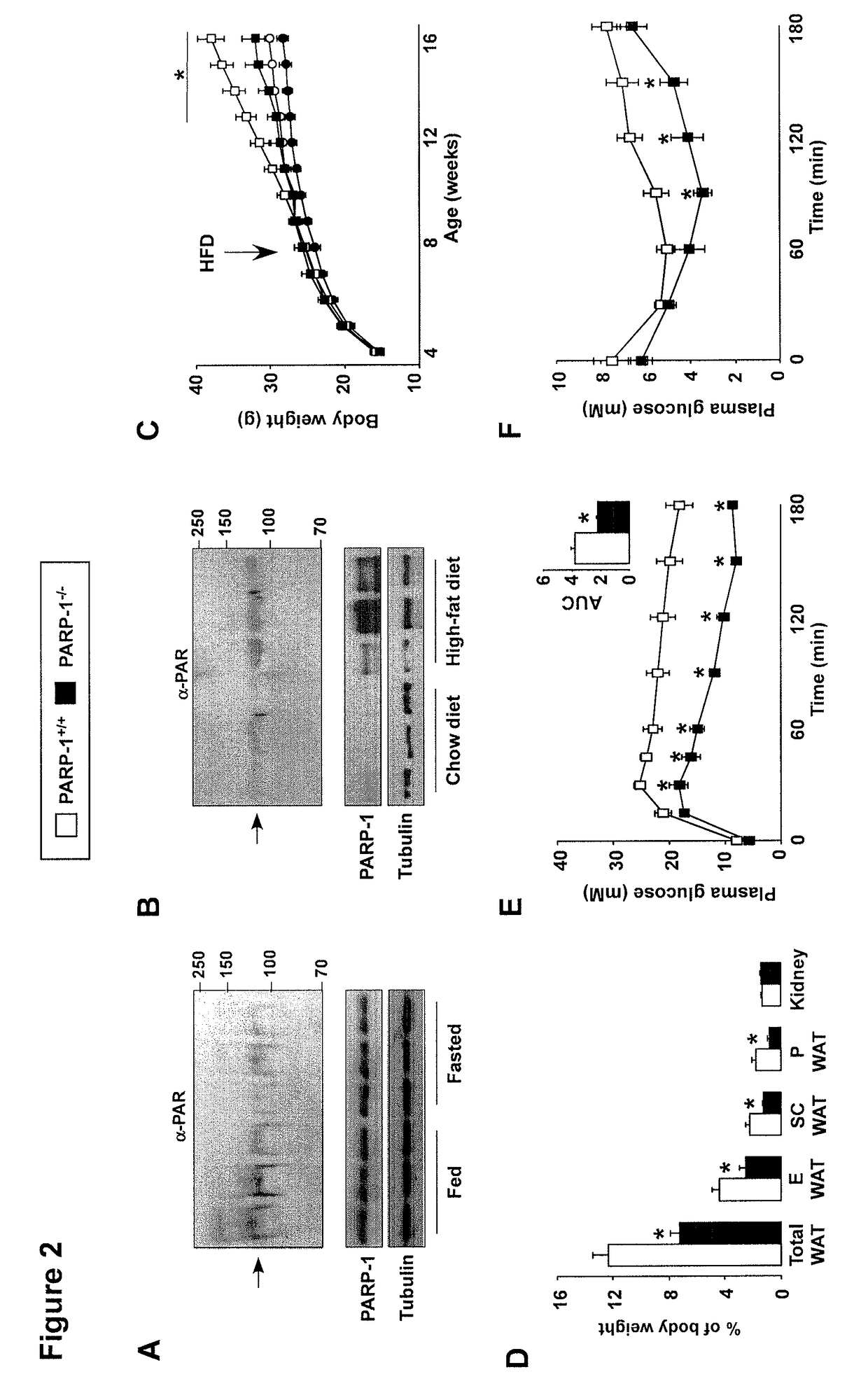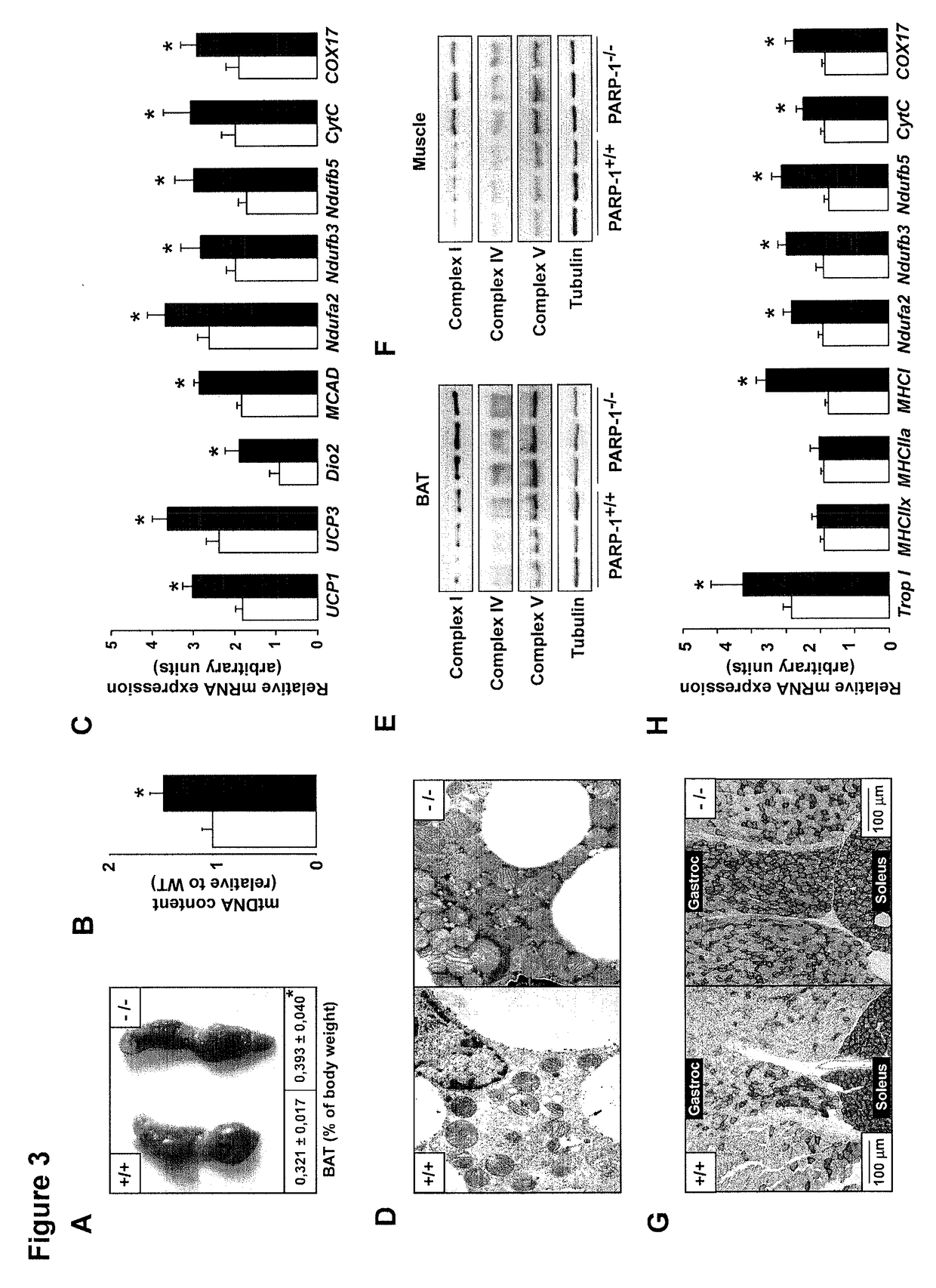Methods of treating mitochondrial dysfunction
a mitochondrial dysfunction and treatment method technology, applied in the direction of biochemistry apparatus and processes, organic active ingredients, dna/rna fragmentation, etc., can solve the symptoms of tissue or organ dysfunction, drug side effects, and the effect of drugs only for a limited time period
- Summary
- Abstract
- Description
- Claims
- Application Information
AI Technical Summary
Problems solved by technology
Method used
Image
Examples
example 1
General Methods
[0098]Materials. All chemicals, including PJ34 (Garcia et al., 2001), were from Sigma-Aldrich unless stated otherwise.
[0099]Animal Experiments. Male PARP-1+ / + and PARP-1− / − mice on a pure C57Bl / 6J background (Menissier-de Murcia et al., 1997) were used. Mice were housed separately, had ad libitum access to water and standard rodent chow (10 kcal % of fat, Safe, Augy, France) or to a high calorie, high fat diet (60 kcal % of fat, Research Diets, New Brunswick, N.J., USA), and were kept under a 12 h dark-light cycle. In other animal experiments, 8 weeks-old male C57Bl / 6J mice were purchased from Charles River and powder chow (D12450B) and high fat (D12492) diets were from Research Diets Inc (New Brunswick, N.J., USA). 80 ml of water per kg of powder CD were used to make food pellets. 40 ml of water per kg of powder HFD were used to make food pellets. For NR, NMN and NA supplemented diets, the appropriate amount of these compounds was added to the water used to create th...
example 3
PARP-1 Protein Levels and Activity are Regulated by Metabolic Challenges
[0133]The striking impact of PARP-1 deletion on metabolism made us wonder whether PARP activity would be dynamically regulated in normal mice upon physiological changes in nutrient availability. To test this hypothesis we analyzed whether nutrient scarcity (fasting) or overload (high-fat diet) would have an effect on PARP-1 activity. A 24-hr fast promoted a significant reduction in PARP activity, as manifested by the lower PARP-1 autoPARylation levels, which reflect global PARylation activity (Adamietz, 1987) (FIG. 2A). This change happened in the absence of changes in total PARP-1 levels, suggesting a lower activity of the enzyme (FIG. 2A). In contrast, nutrient overload induced by high-fat feeding promoted a robust increase in PARP-1 protein levels and PARP activity (FIG. 2B). Together, these data indicate that PARP-1 levels and activity are positively regulated by nutrient availability.
Example 4 PARP-1− / − Mic...
example 7 knocking -
Example 7 Knocking-Down PARP-1 in Cultured Cells Enhances Oxidative Metabolism
[0142]Given the effects of the somatic ablation of PARP-1 on SIRT1 activity and mitochondrial content in transgenic mice, we next evaluated whether reducing PARP-1 activity in an acute fashion could constitute a useful mechanism to increase cellular NAD+ levels and improve energy metabolism. For this purpose, we knocked-down PARP-1 expression in HEK293T cells. With this approach, we reduced PARP-1 protein levels by ˜80%, which dramatically reduced global intracellular PARP activity as manifested in the low auto-poly(ADP-ribosyl)ation of PARP-1 (FIG. 5A). The reduction of PARP activity in this cell model perfectly recapitulated all our in vivo findings. First of all, the reduction in PARP-1 activity increased the NAD+ content (FIG. 5B) and subsequently enhanced SIRT1 function, as evidenced by the strong decrease in PGC-1 acetylation levels (FIG. 5C). Importantly, this change happened in the absence of chang...
PUM
 Login to View More
Login to View More Abstract
Description
Claims
Application Information
 Login to View More
Login to View More - R&D
- Intellectual Property
- Life Sciences
- Materials
- Tech Scout
- Unparalleled Data Quality
- Higher Quality Content
- 60% Fewer Hallucinations
Browse by: Latest US Patents, China's latest patents, Technical Efficacy Thesaurus, Application Domain, Technology Topic, Popular Technical Reports.
© 2025 PatSnap. All rights reserved.Legal|Privacy policy|Modern Slavery Act Transparency Statement|Sitemap|About US| Contact US: help@patsnap.com



